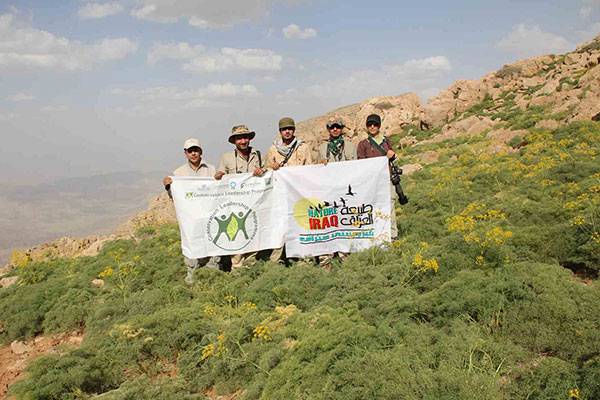Guest blog by Peter Zahler
One of the first assertions that I heard about wildlife from the early days of my career in international conservation was “wildlife doesn’t get to choose where it lives.” Of course, species ‘choose’ where to live in terms of habitat, but where that habitat exists – especially in terms of adjoining or encroaching human activities – is where this assertion becomes an unfortunate reality.
Perhaps few places in the world are a better example of this statement than Afghanistan. A country of enormous cultural and biological wealth, it has been embroiled in violent conflict for nearly four continuous decades. From the Soviet invasion in the 1970s to the various civil wars, insurgencies, and international conflict, these activities have slowly but insidiously taken a toll on the landscapes where wildlife live. While the fighting itself had only minimal impact on wildlife and habitat, the descent into lawlessness (especially the loss of any kind of management and enforcement) coupled with millions of displaced people in desperate need of resources has led to significant degradation of forests, wetlands, rangelands, and other habitats where wildlife has long made its home.
That Afghanistan has significant biological wealth became apparent to me when I first started working there for a UNEP environmental assessment in 2002. Situated at the conflux of four major global biological communities – the Palearctic, the Afrotropical, the Indomalayan, and the greater Himalayan – it includes a complex mix of species from each of these area. It is a country with nine species of wild felids, the same number as all of sub-Saharan Africa (and until recently Afghanistan had 11 species, with Caspian tiger and Asiatic cheetah having disappeared only within the last 70 years). Golden eagles and redshanks from the north mix with greater flamingoes and Egyptian vultures from the southwest, while black drongos and Brahminy starlings find their westernmost range extensions in the country; and Afghanistan’s high mountains are home to multiple species of snowcocks, snowfinches, and rosefinches, along with such unique high-mountain endemics as the ibisbill.
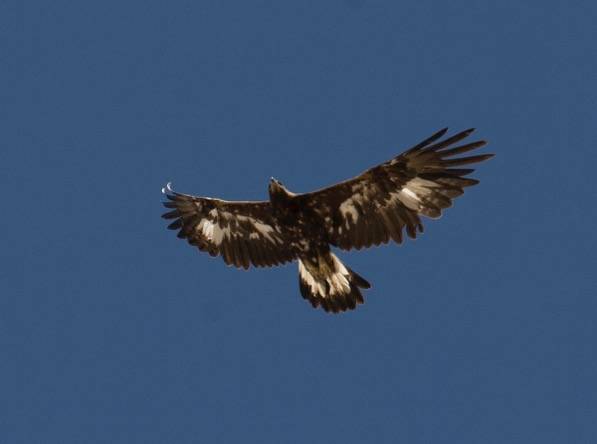
Golden eagles and a host of other raptors still soar over Afghanistan’s striking landscapes. John Winnie/WCS Afghanistan.
While overhunting significantly reduced large mammals in many locations, there are still healthy and globally important populations of such iconic species as the snow leopard, ibex, urial, and Marco Polo sheep. Birds have also suffered from direct persecution and even more from habitat degradation, but globally important populations of certain species can still be found here. While the Afghan snowfinch has received the longest attention related to the country’s importance for specific species conservation, new information on species such as the rare large-billed reed warbler has recently come to the fore in terms of Afghanistan’s global standing for biodiversity conservation.
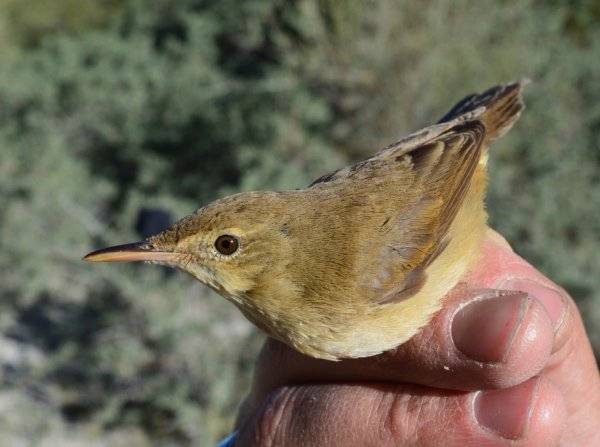
The discovery of nesting large-billed reed warblers in Afghanistan made international news in 2010. Stephane Ostrowski/WCS Afghanistan
Not many people consider Afghanistan as a tourist or birding destination, but quietly some parts of the country have regained a measure of tourist interest. Historically Afghanistan was a premiere destination for European tourists interested in its fascinating ancient cultures and astonishing geographic settings. This was clearly stopped short by the conflicts that began in the 1970s, but two landscapes have seen a resurgence of interest.
Band-e-Amir is Afghanistan’s first National Park, situated in the central highlands of the Hindu Kush in the Bamyan district. Bamyan is perhaps best-known for the similarly named town that once housed enormous carved Buddhas from roughly the 4th Century AD that the Taliban destroyed to international condemnation in 2001. While the town is still regularly visited by tourists as the region is considered very secure and the empty Buddha-shorn cliffs are still a powerful draw, just down the road a few hours’ drive is one of the most spectacular landscapes on the planet.
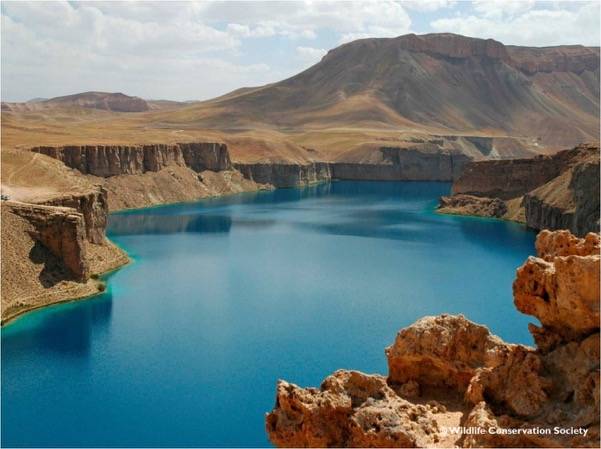
The six breathtaking lakes of Band-e-Amir National Park lie in a high-elevation gorge in the Hindu Kush. WCS Afghanistan.
The six lakes of Band-e-Amir are crystal-blue waters set apart by natural travertine dams, some of them 15 meters or more in height, all set in a dramatic, high-mountain desert gorge surrounded by steep, red-tinged cliffs. Afghanistan’s first protected area and National Park, so designated in 2009, Band-e-Amir now gets more than 150,000 tourists a year. Most of these are Afghans from all over the country, who come here to picnic with their families, visit a famous shrine, boat or hike around the lakes, and relax in a peaceful setting. Birding here can bring any number of interesting surprises, from a variety of raptors to black-throated grebes, rufous turtledoves, rosy starlings, rock nuthatches, and breeding Afghan snow finches.
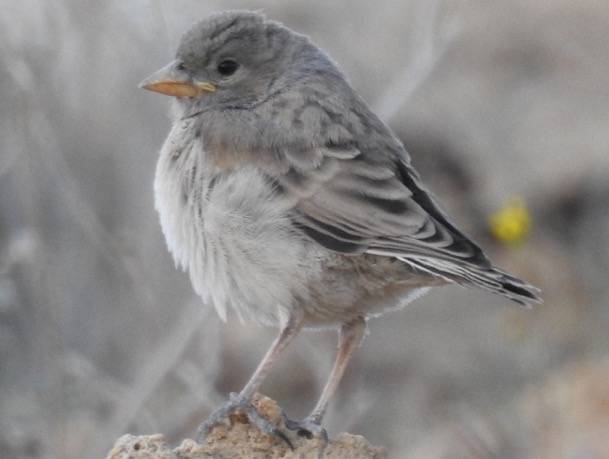
A juvenile Afghan Snowfinch, a rare species that is found in the Bamyan highlands, including in and around Band-e-Amir National Park. Nasrat Jahed/WCS Afghanistan
On the far northeastern end of the country lies the Wakhan, a strange corridor of land originally designated by the British as a means to help keep the Russians out of what was then India. A dramatically rugged, largely alpine setting, it has always avoided the conflicts infecting the rest of the country by dint of its high elevation (mostly over 3,000 meters and often well over 4,000 and even 5,000 meters) and remote and isolated setting. Home to a robust population of snow leopards, Marco Polo sheep, ibex, and urial sheep, the region is also home to about 15,000 Wakhi shepherds and about 1,500 Kyrgyz settlers. Designated Afghanistan’s second protected area – Wakhan National Park – in 2014, this nearly 11,000 km2 region is now co-managed by local communities in partnership with the government.
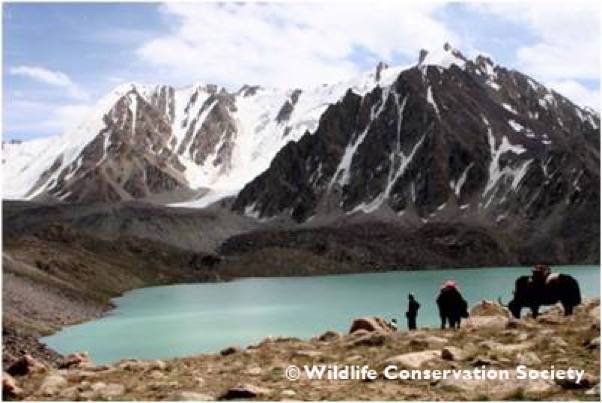
Wakhan National Park’s stark and forbidding mountains have helped protect a wealth of wildlife. WCS Afghanistan.
The Wildlife Conservation Society (WCS) has been working in Afghanistan since 2006, with a staff of more than 50 Afghan and international experts, to help build the country’s capacity to manage and protect their wildlife and natural resources. Our close partnership with the Afghan government and with local communities helped lead to the creation of these two national parks, which highlight Afghanistan’s commitment – even in the face of great adversity – to protecting its precious and globally important natural heritage.
Peter Zahler has worked in the Central and South Asia region for over 25 years. He started and ran the WCS Pakistan Program beginning in 1997, the WCS Mongolia Program in 2003, and the WCS Afghanistan Program in 2006. He currently serves as the Director of the WCS Training and Capacity Building Program, Senior Advisor of Conservation Strategy for the WCS Health Program, and Coordinator for the WCS Snow Leopard Program.

Peter Zahler

